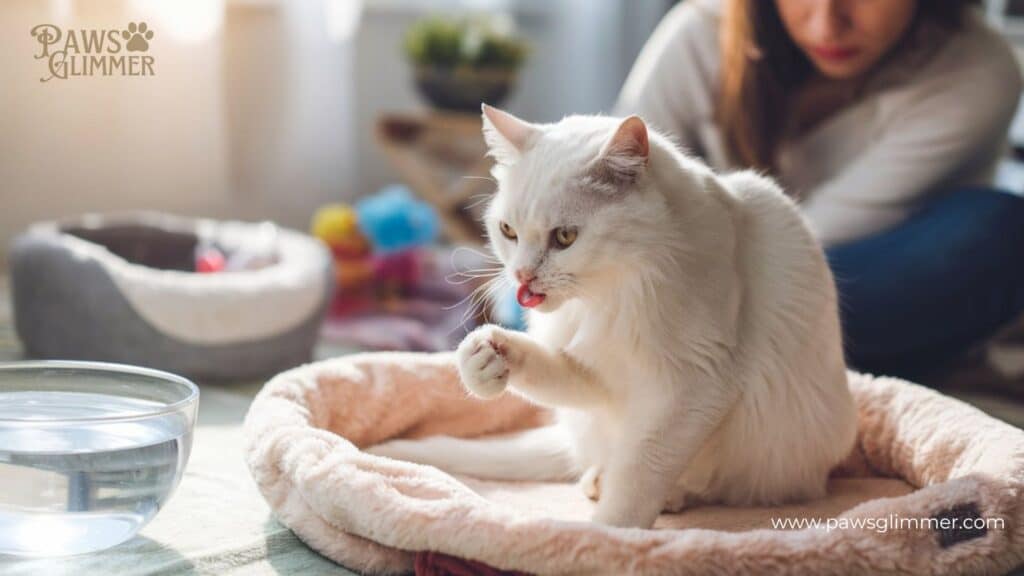Cats are fascinating creatures with an instinct to lick wounds. If you’re wondering how to stop your cat from licking a wound, options like Elizabethan collars or safe topical treatments can help. This natural urge, while instinctual, can sometimes do more harm than good.
If you’re wondering how to stop your cat from licking a wound, methods like using an Elizabethan collar, distractions, or vet-approved topical treatments can help. These options prevent further irritation and promote healing. Let’s explore how to support your cat’s recovery without interference.
The Science Behind Wound Licking: A Double-Edged Sword
When your cat licks a wound, it’s not just being finicky. This innate behavior serves several purposes:
- Cleaning the wound
- Stimulating blood flow
- Promoting tissue regeneration
- Alleviating pain
Continue Reading About Tortoiseshell Cat
Cat saliva contains enzymes with mild antibacterial properties, which can help in the initial stages of wound cleaning. However, excessive licking can lead to complications:
- Reopening of wounds
- Infection introduction
- Delayed healing
- Tissue damage
“While a cat’s instinct to lick wounds can be beneficial initially, prolonged licking often does more harm than good.” – Dr. Feline, DVM
Assessing Your Cat’s Wound: When to Worry
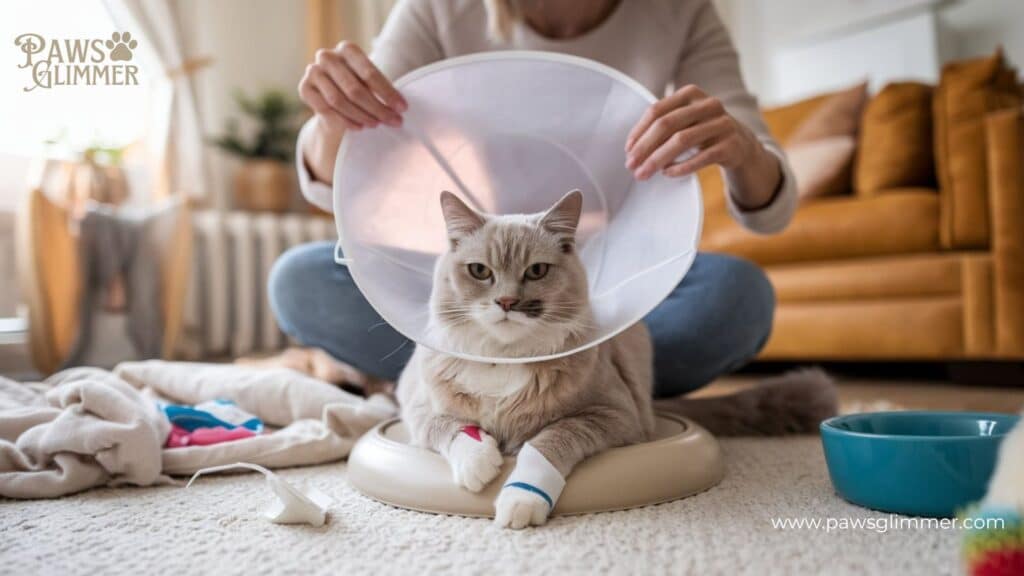
Before we jump into prevention methods, it’s crucial to assess the severity of your cat’s injury. Here’s a quick guide:
| Severity | Signs | Action |
|---|---|---|
| Minor | Small scratch, no bleeding | Monitor at home |
| Moderate | Deeper cut, slight bleeding | Clean and watch closely |
| Severe | Deep wound, heavy bleeding, visible muscle/bone | Immediate vet visit |
If you notice signs of infection such as redness, swelling, pus, or your cat showing signs of distress, don’t hesitate to seek veterinary care. A professional advice can make all the difference in your pet’s recovery.
5 Effective Methods to Prevent Wound Licking
1. The Elizabethan Collar: The Classic Solution
The Elizabethan collar, affectionately known as the “cone of shame” or e-collar, is a tried-and-true method for preventing wound licking. This protective cone fits around your cat’s neck, creating a physical barrier that stops them from reaching the affected area.
Pros:
- Highly effective
- Durable
- Allows visibility
Cons:
- Can be stressful for some cats
- May interfere with eating and drinking
- Can make navigation difficult
How to use:
- Choose the right size (should extend just beyond the nose)
- Introduce gradually with treats and praise
- Monitor for signs of distress
2. Soft Collars and Inflatable Options: Comfort Meets Function
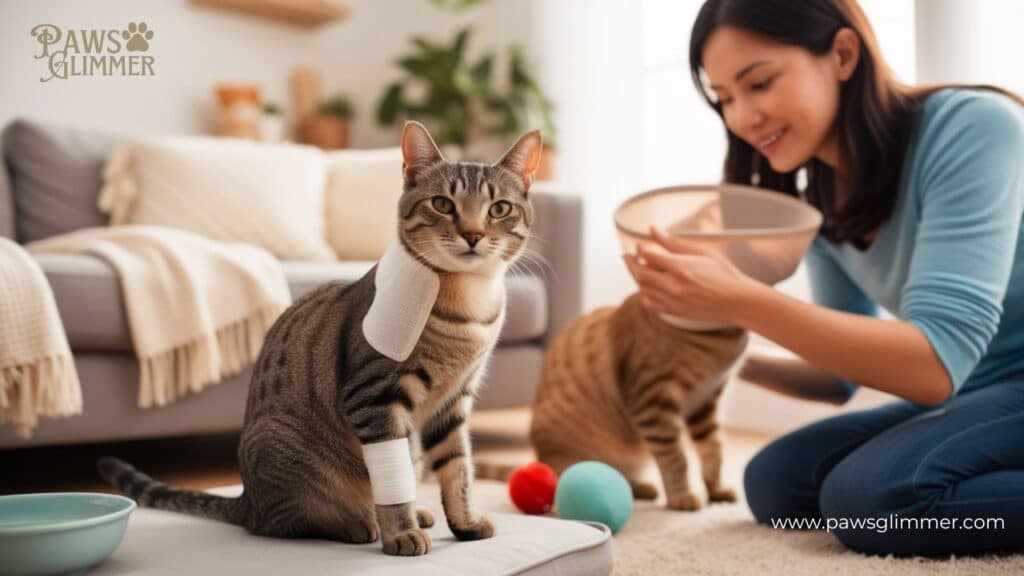
For cats who find traditional e-collars too restrictive, soft collars and inflatable collars offer a more comfortable alternative. These flexible barriers still prevent access to wounds but allow for easier movement and less stress.
Types of soft collars:
- Fabric cones
- Inflatable donut collars
- Neck protectors
Benefits:
- More comfortable for sleeping
- Less intimidating for cats
- Easier to eat and drink while wearing
3. Bitter Sprays and Creams: Taste Deterrents
Antiseptic sprays and creams with a bitter taste can discourage licking while also providing wound disinfectants. These topical treatments create an unpleasant experience when your cat attempts to lick the wound.
How to apply:
- Clean the wound as directed by your vet
- Apply a thin layer of the bitter spray or cream around (not on) the wound
- Reapply as needed, following product instructions
Caution: Always consult your veterinarian before applying any product to your cat’s wound to ensure it’s safe and won’t interfere with healing.
For More Information on It Safe to Use White Vinegar Around Cats
4. Protective Clothing: Fashion Meets Function

Pet sleeves and recovery suits can be an excellent option for covering wounds while allowing your cat to move freely. These protective garments come in various styles:
- Full-body suits
- Partial coverage sleeves
- Custom-fit options
Advantages:
- Allows for normal movement
- Can be less stressful than collars
- Protects larger areas
Considerations:
- Ensure proper fit to prevent chafing
- Monitor for overheating in warm weather
- May need to be changed regularly for hygiene
5. Environmental Enrichment and Distraction: Keeping Busy Minds Off Wounds
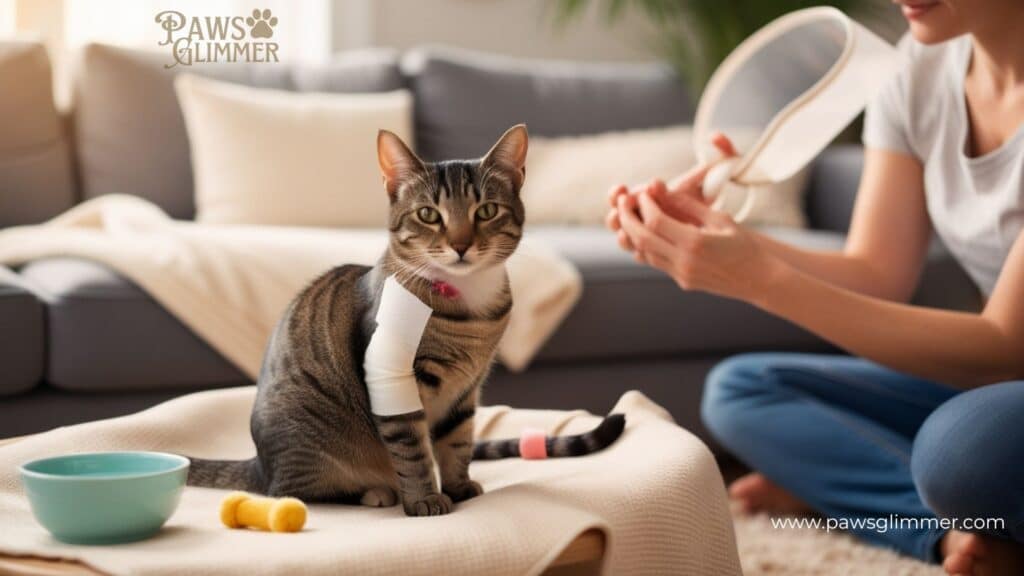
Sometimes, the best way to stop your cat from licking a wound is to keep them distracted. Environmental enrichment can redirect your cat’s focus and energy away from their injury.
Distraction techniques:
- Interactive toys (puzzle feeders, treat dispensers)
- New climbing structures or scratching posts
- Scheduled playtime sessions
- Calming pheromone diffusers to reduce stress
By keeping your cat mentally and physically engaged, you can reduce their tendency to fixate on the wound, promoting optimal recovery.
Home Care for Healing Wounds: Supporting the Recovery Process
Proper wound cleaning and care at home are essential for successful healing. Here’s a step-by-step guide:
- Clean hands: Always start with clean hands to prevent introducing bacteria.
- Gentle cleansing: Use a vet-approved antiseptic solution to clean around the wound.
- Pat dry: Gently pat the area dry with a clean, soft cloth.
- Apply medication: If prescribed, apply any ointments or creams as directed.
- Monitor: Check the wound daily for signs of infection or delayed healing.
Remember: Never use human first-aid products on your cat without veterinary approval. Some common household antiseptics can be toxic to cats.
The Role of Nutrition in Wound Healing: Fueling Recovery
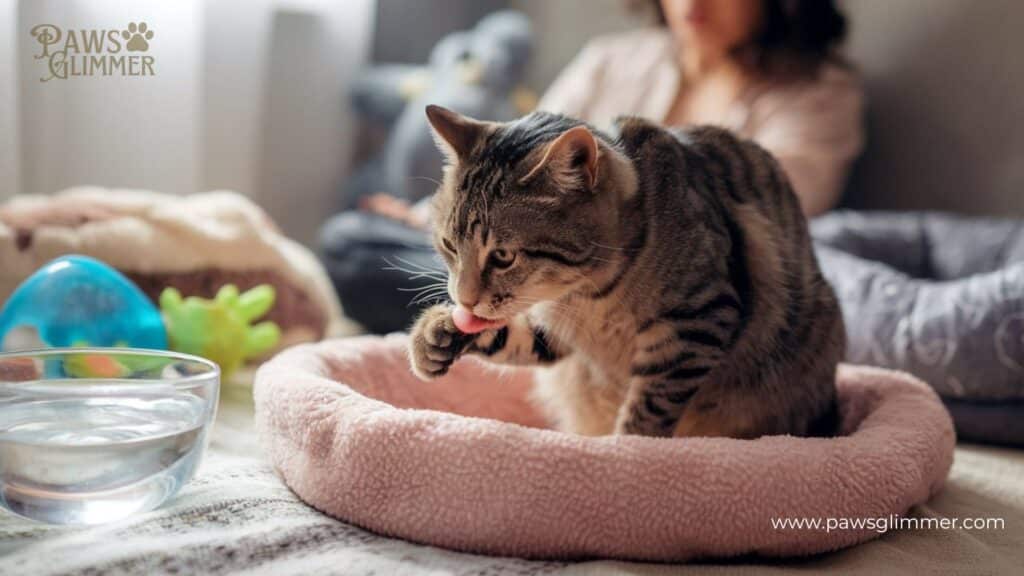
A balanced diet plays a crucial role in your cat’s healing process. Certain nutrients are particularly important for tissue repair and injury healing:
- Protein: Essential for tissue regeneration
- Vitamin C: Supports collagen production
- Zinc: Aids in wound closure and skin health
- Omega-3 fatty acids: Reduce inflammation
Consider discussing with your vet whether a temporary switch to a high-protein, nutrient-dense diet might benefit your cat during recovery.
Expand Your Insights with These Reads
When to Worry: Red Flags in Wound Healing
While most wounds heal without complications, it’s important to be vigilant for signs of trouble. Seek immediate veterinary care if you notice:
- Increased redness or swelling
- Foul odor from the wound
- Pus or excessive discharge
- Fever or lethargy in your cat
- The wound appears to be getting larger
- Your cat shows signs of pain or distress
Long-term Strategies for Wound Prevention

Preventing injuries is always better than treating them. Here are some strategies to minimize the risk of wounds:
- Regular health check-ups: Catch potential issues early.
- Nail trimming: Prevent self-inflicted scratches.
- Safe environment: Remove hazards from your cat’s living space.
- Proper nutrition: A healthy cat is less prone to injuries and heals faster.
- Stress reduction: A calm cat is less likely to engage in self-harming behaviors.
Case Study: Luna’s Recovery Journey
Luna, a 3-year-old Siamese, suffered a deep cut on her leg after an unfortunate encounter with a sharp edge. Her owner, Sarah, noticed Luna’s excessive licking of the wound and sought veterinary help.
The approach:
- Initial wound cleaning and stitching by the vet
- Elizabethan collar for the first 3 days
- Switch to a soft collar for comfort
- Daily wound cleaning with prescribed antiseptic spray
- Distraction with new interactive toys
- High-protein diet to support healing
Outcome: Luna’s wound healed completely within 2 weeks, with no complications. Sarah’s diligent care and the multi-faceted approach to prevent licking were key to Luna’s speedy recovery.
Conclusion: Balancing Care and Comfort
Managing a cat’s wound requires a delicate balance between allowing the natural healing process and preventing harmful effects of excessive licking. By understanding your cat’s innate behavior and employing a combination of physical barriers, topical deterrents, and environmental management, you can ensure proper healing and a speedy recovery for your feline friend.
Remember, each cat is unique, and what works for one may not work for another. Patience, consistency, and close observation are your best tools in helping your cat heal. And when in doubt, always consult with your veterinarian for personalized advice and care.
By following these guidelines and staying attentive to your cat’s needs, you’ll not only promote effective treatment but also strengthen the bond between you and your furry companion. After all, nothing says love quite like helping your cat through a tough time with gentle, informed care.

Raymond Dandan is a seasoned pet blogger with a passion for feline care and behavior. With years of experience and a deep love for cats, Raymond brings expert insights and practical tips to “PawsGlimmer.” His engaging writing and thorough research help cat owners provide the best for their furry friends, making him a trusted voice in the pet community.

